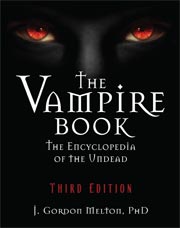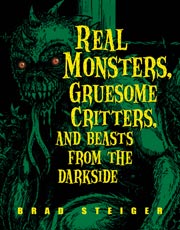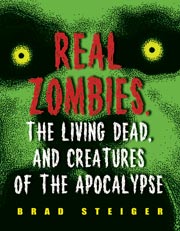Blood-red rains
A more common precipitation anomaly is colored rain, of which hundreds, perhaps thousands, of examples exist. The most dramatic concern "rains of blood." Corliss expresses the conventional view when he writes, "The coloring matter in blood rains inevitably turns out to be reddish dust and organic matter," and attributes contrary views to "the superstitious." In fact, the adverb "inevitably" overstates the case, and the characterization of the intellectual deficiencies of witnesses and informants is untrue and unwarranted. Still, one sympathizes; blood rains are not only wildly incredible but profoundly alarming, and every intellectual and emotional impulse commands us to put them out of their existence as quickly as possible.
In July 1841 enslaved workers in a field in Wilson County, Tennessee, reported that just before noon a small red cloud suddenly appeared in an otherwise clear sky; from the cloud fell a shower of "blood, muscular fibre, adipose matter," in the words of a local physician, W. P. Sayle, who examined it at the site. Enclosing some samples, Sayle wrote to a professor of chemistry at the University of Nashville:
The particles I send you I gathered with my own hands. The extent of surface over which it spread and the regular manner it exhibited on some green tobacco leaves, leave very little or no doubt of its having fallen like a shower of rain.... I have sent what I think to be a drop of blood, the other particles composed of muscle and fat, although the proportion of the shower appeared to be a much larger quantity of blood than of other properties.
Another physician, G. W. Bassett of Virginia, recounted this event in the spring of 1850 in a letter to a colleague:
About four p.m. yesterday, being Good Friday, a small cloud passed over Mr. Chas. H. Clarke and several of my servants, a few paces from the south bank of the Pamunkey River in the lower end of Hanover County, Virginia, on the estate called Farmington, and discharged around the parties, over a surface of something less than a rood of ground, various pieces of flesh and liver, too well defined in each sort to allow any mistake in their character. I gathered this morning from the spot, from four to six ounces, distributed over the above-mentioned surface. The pieces picked up at the remotest points, in a line from N.W. to S.E., were about 25 paces from each other. One would weigh near an ounce. The direction of the cloud was from N.E. to S.W., as described by Mr. Clarke, who is a gentleman of intelligence and established credibility. Mr. Brown, with myself, visited the spot this morning and all aided in picking up 15 to 20 pieces which I have by me at this moment and from which I send you a sample and desire it may be passed over to Dr. Gibson, that he may ascertain what sort of flesh it is. The flesh and liver are in a perfect state at this moment and the latter part I shall put in alcohol for the future inspection of the curious.
A similarly grisly rain is said to have taken place the previous February 15 in Simpson County, North Carolina, where pieces of flesh, liver, brains, and blood, all looking fresh, fell out of a red cloud and splattered over an area thirty feet wide and 250 to 300 yards long. According to the San Francisco Herald of July 24, 1851, blood and flesh, with pieces ranging in size from a pigeon's egg to a small orange, descended in a two- to three-minute shower on an Army station at Benicia, California, covering a spot of ground thirty yards wide and 300 yards long.
One Sunday in July 1869 blood reportedly fell out of a clear sky and landed on two acres of a cornfield near Los Angeles. Those who saw it -- a funeral party that included members of the clergy -- had no doubt that the substance was blood. Not only was it a thick, vivid red, but it contained hairs and portions of organs.
It is easier to believe that stories like these are wholly fictitious than it is to credit complacent assertions that the fallen material was really water colored from dust or plant matter. Here, after all, we have rational, educated witnesses. These, moreover, are not the only such stories. A vividly red and bloodlike rain during a storm on October 16 and 17, 1846, caused widespread terror among French witnesses. A chemist who studied the material under a microscope noted a "great quantity of corpuscles." Rather more specifically, after a red stuff rained on Messignadi, Calabria, the Italian Meteorological Bureau identified it as bird's blood.
On March 8, 1876, "flakes of meat" came down out of the sky to land on a Bath County, Kentucky, field, and one brave witness tasted a "perfectly fresh" sample. It reminded him, according to Scientific American (March 1876), of "mutton or venison." This widely reported event sparked some considerable controversy and soon fell victim to two conventional, contradictory, and unconvincing explanations. One was that the material was nostoc (blue-green algae) that had been there on the ground all along but sprouted in the wake of a rain; in fact, the sky was clear during the fall. The second averred the material to be buzzard vomit, even though it fell in thick volume, consisted of numerous flakes from one to four inches square, and covered ground, trees, and fences on a strip of land 100 yards long and fifty yards wide.
In 1888, after a red rain fell on the Mediterranean region on two occasions twelve days apart, samples were burned, leaving a strong and persistent "odor of animal matter," according to the French scientific journal Astronomie.
If we cannot properly explain these sorts of stories, we can, at least, be relieved that after the nineteenth century they become exceedingly rare. Whether that is because they occur less frequently, or simply because owing to their outlandish character they see print less often than they did in what Charles Fort called the "days of less efficient strangulation," we can only speculate. A rare twentieth-century instance was recorded in Sao Paulo, Brazil, newspapers on August 30, 1968, describing a meat and blood shower on two small towns between Sao Paulo and Rio de Janeiro. According to a terse statement from a law-enforcement officer:
The pieces of flesh were found lying at distances of half a meter apart, their size varying between lengths of 5 cm. and 20 cm. The meat was of a spongy texture and violet in color, and was accompanied by drops of blood. The sky at the time was quite clear. No aircraft had been seen just prior to, during, or after the event, nor were there any birds in the sky.
From Unexplained! Strange Sightings, Incredible Occurrences, and Puzzling Physical Phenomena, 2nd Edition by Jerome Clark, (c) 1999 Visible Ink Press
Award-winning exposition of the mysterious and unexplained.











